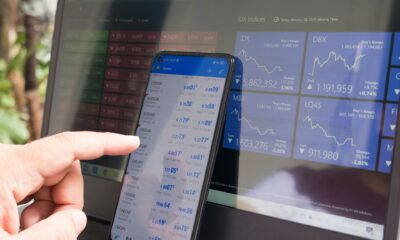Featured
Consumer Price Index in Spain confirms its positive path and rises 1.3% in March
In monthly rate (March over February), the CPI jumped 1%, its highest monthly rebound since October 2019, driven by the rise in electricity, fuels and clothing and footwear due to the start of the spring-summer season. Core inflation (excluding unprocessed food and energy products) stood at 0.3% in March, the same rate as in February and one point below the overall rate.

The Spanish Consumer Price Index (CPI) rose by 1% in March compared to the previous month and placed its annual rate at 1.3%, almost 1.5 points above that of February (0.0%), according to data published on Wednesday by the National Statistics Institute (INE), which confirm those advanced at the end of last month.
With this rebound, with which the annual CPI chains its third consecutive positive rate, inflation climbs to levels unknown for almost two years. In fact, such a high CPI rate had not been reached since April 2019, when it stood at 1.5%.
Likewise, the year-on-year rate of inflation had not recorded such a steep (1.3 point) jump since the end of 2016, when it rose from 1.6% in December of that year to 3% in January 2017.
The strong increase in prices in March has mainly contributed to the rise in electricity, heating oil and fuels and lubricants for personal transport, in contrast to the price drop they experienced in March 2020.
Born2Invest application is a fast and easy way to check the latest business headlines. It gives users access to recent publications and stories, media and objective analysis, thematic sections and feeds.
In the third month of 2021, the Harmonized Index of Consumer Prices (HICP) placed its year-on-year rate at 1.2%
In contrast, the INE highlights the stability of prices in telephone and fax services recorded in March, which caused the telecommunications group to reduce its year-on-year rate by almost 1.5 points, to -4.9%.
The year-on-year rate of food and non-alcoholic beverages also fell by two tenths, to 1.4%, due to the lower prices of fish and seafood.
In monthly rate (March over February), the CPI jumped 1%, its highest monthly rebound since October 2019, driven by the rise in electricity, fuels and clothing and footwear due to the start of the spring-summer season.
Core inflation (excluding unprocessed food and energy products) stood at 0.3% in March, the same rate as in February and one point below the overall rate.
In the third month of 2021, the Harmonized Index of Consumer Prices (HICP) placed its year-on-year rate at 1.2%, almost 1.5 points higher than the previous month. In monthly rate, the HICP rose by 1.9%.
Since last January, the CPI includes the new weightings assigned by the INE to the shopping basket to adapt this indicator during this year to the new consumption habits derived from the pandemic.
Thus, the group that has gained the most weight in the shopping basket is food and non-alcoholic beverages. On the other hand, clothing and footwear, transport, leisure and culture, and hotels, cafés and restaurants, among others, lost weight.
__
(Featured image by Free-Photos via Pixabay)
DISCLAIMER: This article was written by a third party contributor and does not reflect the opinion of Born2Invest, its management, staff or its associates. Please review our disclaimer for more information.
This article may include forward-looking statements. These forward-looking statements generally are identified by the words “believe,” “project,” “estimate,” “become,” “plan,” “will,” and similar expressions. These forward-looking statements involve known and unknown risks as well as uncertainties, including those discussed in the following cautionary statements and elsewhere in this article and on this site. Although the Company may believe that its expectations are based on reasonable assumptions, the actual results that the Company may achieve may differ materially from any forward-looking statements, which reflect the opinions of the management of the Company only as of the date hereof. Additionally, please make sure to read these important disclosures.
First published in EL INDEPENDIENTE, a third-party contributor translated and adapted the article from the original. In case of discrepancy, the original will prevail.
Although we made reasonable efforts to provide accurate translations, some parts may be incorrect. Born2Invest assumes no responsibility for errors, omissions or ambiguities in the translations provided on this website. Any person or entity relying on translated content does so at their own risk. Born2Invest is not responsible for losses caused by such reliance on the accuracy or reliability of translated information. If you wish to report an error or inaccuracy in the translation, we encourage you to contact us.

-

 Markets2 weeks ago
Markets2 weeks agoRice Market Rebounds from Oversold Lows Amid Weak Demand
-

 Crypto4 days ago
Crypto4 days agoEthereum in 2025: Volatility, Maturity, and Strategic Renewal
-

 Africa2 weeks ago
Africa2 weeks agoMorocco’s Rising Country Risk Profile Boosts Investor Confidence
-

 Markets4 days ago
Markets4 days agoSugar Markets Cautious Amid Surplus Outlook and Steady Demand

























